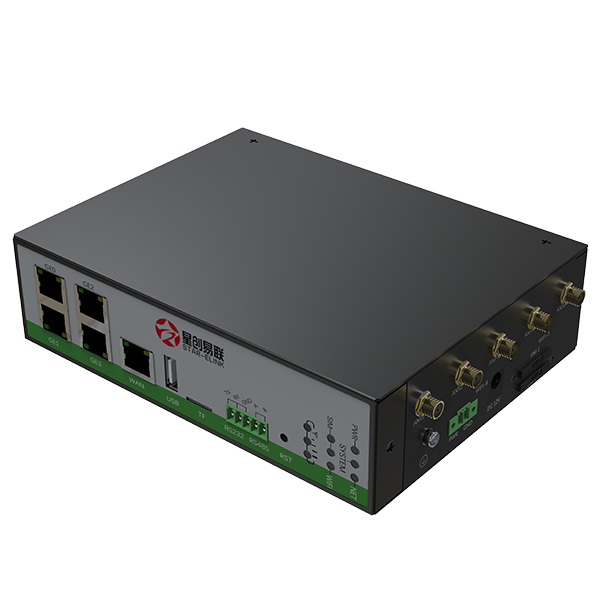SEARCH
— 葡萄酒 | 威士忌 | 白兰地 | 啤酒 —
— 葡萄酒 | 威士忌 | 白兰地 | 啤酒 —

SR800 Industrial 5G Router
In the context of 5G industrial routers, the common networking modes SA (Standalone) and NSA (Non-Standalone) are supported by dual-mode 5G routers to better meet user networking needs. With the widespread application of 5G, today we will explain the differences between SA and NSA networking modes.
NSA, also known as “non-independent networking,” involves upgrading the existing 4G network by connecting 5G base stations to the 4G core network. Both 5G and 4G base stations share the upgraded 4G core network, with the control plane using the 4G base station and the user plane using the 5G base station.
SA, or “independent networking,” involves the independent construction of a 5G core network. Both the control plane and user plane directly connect to the 5G core network through 5G base stations. Based on the SBA (Service-Based Architecture), SA leverages technologies like network slicing to fully utilize the performance advantages of 5G networks, promoting deep integration of 5G with various industries.
China’s major operators have built the world’s largest commercial 5G SA network, achieving nationwide 5G SA network coverage. With the full-scale commercial deployment of SA networks, a coexistence of SA and NSA networking modes has emerged, leading to the use of dual-mode SA and NSA 5G.
In tests using 5G networks, SA generally offers better speeds than NSA. The average download speed of SA networks is 396.8 Mbps, higher than NSA’s 351.9 Mbps. Both 5G speeds are over ten times faster than 4G networks.
The SR800 industrial router supports full-netcom 5G and is backward compatible with 4G, offering users more flexible networking options. Designed for industrial use, it features a high-performance dual-core processor, IP30 protection level housing, low power consumption, and a wide voltage range of 7.5V~32V DC. It supports wall-mounting, dual-band WiFi (2.4GHz and 5.8GHz), and both STA (Station) and AP (Access Point) modes, allowing for bridging.
Industrial 5G routers are widely used in smart security, smart warehousing, smart campuses, new energy charging piles, smart retail, and smart transportation. They can convert 5G internet cards to WLAN or use LAN ports for networking, fully utilizing 5G networks to connect multiple devices and facilitate easy networking.
In the rapidly evolving world of the Internet of Things (IoT), a critical question arises: what narrow strait was important to the IoT? The answer lies in the realm of Low-Power Wide-Area Network (LPWAN) technologies, where two contenders, NB-IoT ...
View detailsIn the rapidly evolving landscape of industrial connectivity, 5G technology promises to revolutionize the way we approach data transmission and network management. At the forefront of this technological shift are industrial 5G routers with SIM car...
View detailsExplore the transformative power of industrial IoT gateways in smart manufacturing. Learn how Yeaplink's solutions drive efficiency, security, and innovation in Industry 4.0.
View detailsMy home telecom broadband is 300 Mbps. When I use 2.4G Wi-Fi, the download speed is 7 Mbps, but when I use 5G Wi-Fi, the download speed is 27 Mbps. Is this situation correct? I feel that the download speed within 100 Mbps should be the same.
View detailsMo